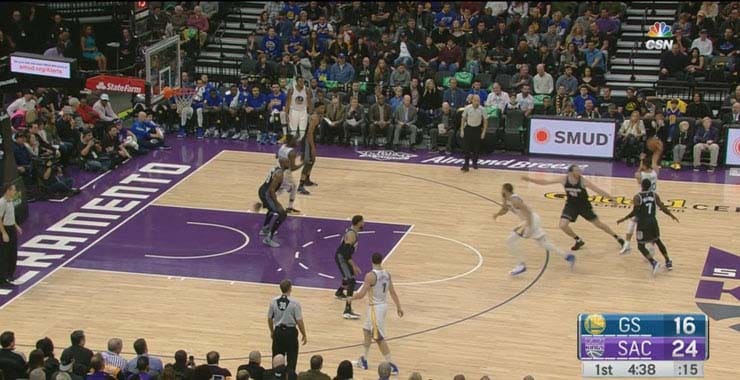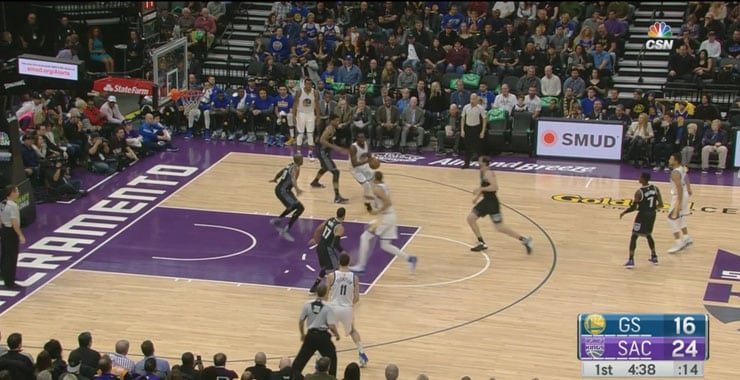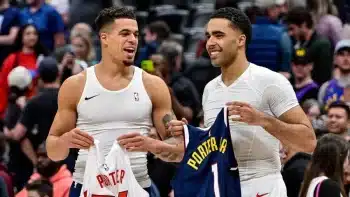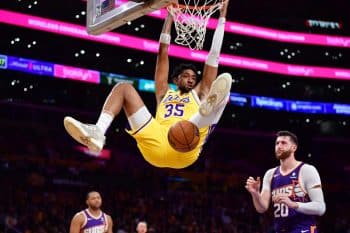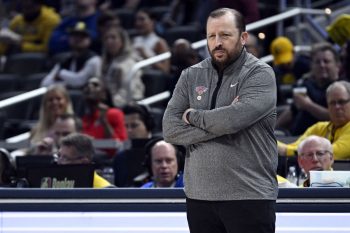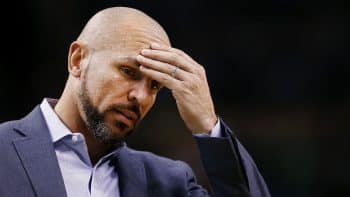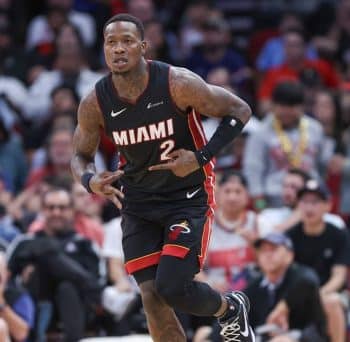NBA
The Big 3: Hawks, Award Races and Play of the Week

Welcome to The Big 3, where we convene to break down three notable stories, features or plays from the week that was in the NBA. This week’s edition features the Atlanta Hawks’ strange trajectory, a wide-open awards race and a Play of the Week to help illustrate the value of spacing in the NBA. Let’s get started!
- The Hawks, Inscrutable
When Atlanta sent Kyle Korver to the Cleveland Cavaliers a couple weeks ago for a return package that was effectively just a future first-round pick, it appeared the writing was on the wall. The Hawks were in the midst of a disappointing year where they were merely fighting for a playoff spot rather than potentially locking up a home series in the first round like some had expected and Korver move was expected to be the first domino in a series of tear-down moves that dropped them fully out of contention and focused on the future.
Things were already changing at the time they made the move, though, and they’ve kept changing. The Hawks had won four straight before dealing Korver, a streak which would eventually reach seven straight and nine of 10 once he was gone. They now sit in that once-elusive home playoff seed – they’d be fourth in the East if the season ended today.
There are a few ways to look at this from the Hawks’ standpoint. This stretch of schedule looked pretty friendly for Atlanta for weeks leading up to it, so could these recent wins just be an expected part of the deal? Maybe, but recent rumors that star forward Paul Millsap was now off the trading block make it seem as though perhaps their decision-making changed somewhere along the line.
If that’s the case, the options are a little juicier. Is it possible the Hawks were originally planning a major fire sale, but pivoted quickly due to their strong run? Even juicier, is it possible that Korver’s absence suddenly made certain staffers realize the team might be better without him? It sounds a bit crazy, but Korver’s level has definitely slipped this year and the team was performing much better with him on the bench while he was in town.
Or maybe this was the plan all along. Maybe the Hawks saw the writing on the wall with Korver and figured the best way to get real value for him was to frame a trade as the first domino in a rebuild before pulling back on their other assets. It’s a savvy bit of maneuvering if so, and one that could set the Hawks up better for the future.
We’ll never know for sure, and it’s likely the answer is some combination of these theories. No matter what, tracking the Hawks for the rest of the year – and especially up to the trade deadline – will be interesting.
- Wide-Open Races
Joel Embiid has liquefied the Rookie of the Year race before it even got started and Giannis Antetokounmpo seems to be running away with Most Improved Player. Still, there are several other big end-of-season award races which, as of just over halfway through the season, still feel close to wide-open.
The MVP race has felt like a two-man job for most of the year, but squint hard enough and there are some cracks in the cases of both Russell Westbrook and James Harden. The Oklahoma City Thunder are beginning to slide a bit in the standings, now jostling with Memphis for the 6-seed and three full games back of Utah for anything higher than that – it’s historically nearly impossible to win the MVP on a team that’s not at least hosting a home playoff series in the first-round.
In Harden’s case, the Houston Rockets’ prolific success while their star is off the floor (a situation not duplicated by guys like Westbrook or LeBron James) has some whispering about “value” conversations despite his amazing production. Those two still lead the pack, to be sure. But with Kevin Durant putting up a ridiculously efficient season for the league-best Warriors, James still functioning as Cleveland’s only on-court hope at regularly winning basketball games and names like Leonard, Thomas and Lowry lurking in the wings, don’t count any chickens here yet.
Rudy Gobert and Draymond Green likely lead Defensive Player of the Year, but it’s neck-and-neck between the two and dark horses like Kawhi Leonard and DeAndre Jordan still loom if their teams have strong second halves defensively. Coach of the Year could go about 10 different ways – it would seem like Mike D’Antoni and Dave Fizdale are near the top of the heap for now, but guys like Gregg Popovich, Steve Kerr, Dwane Casey, Ty Lue and Quin Snyder could all deserve the spot depending on who you ask.
For Sixth Man of the Year, it would appear Eric Gordon and Enes Kanter are among the favorites. But who can count out Lou Williams or Jamal Crawford at any point? Does anyone ever have any clue who’s winning Executive of the Year until it happens?
All of this is without even getting into various All-NBA teams, which could create as much noise as ever this year due to their potential attachment to Designated Player contracts in the newly-signed CBA. It’s going to be fun to track several of these races as we close in on April and May.
- Play of the Week
If you still think of the NBA’s shooting revolution as nothing but a lazy replacement for “purer” kinds of basketball, there are dozens of reasons why the game left you behind years ago. One of the strongest? Three-pointers directly influence dunks and layups, the more “traditional” great shots purists continually yell themselves hoarse about.
There’s no better team to illustrate this than the league’s three-point poster boys, the Golden State Warriors. The Warriors launch a ton of triples, but they supplement their unparalleled shooting arsenal with smart plays designed to leverage that shooting into free points – and they do it using a bit of nitty-gritty Xs and Os.
The common tactics for defending Stephen Curry when he handles the ball in pick-and-roll have mostly been tried and tested down to two methods most opponents take: Either they blitz him with both his defender and the screener’s defender, forcing the ball out of his hands earlier, or they simply switch the screen and live with whatever damage Curry does to a bigger defender. The other main option – defending him conservatively and dropping the big man back into the paint like many teams do against most pick-and-rolls – is suicide, as it leaves Curry an open pull-up three anytime he wants.
For teams who choose to blitz or trap Curry with both pick-and-roll defenders, the Warriors have a wrinkle to get an even higher expected point value out of the play. They use a tactic called “shorting” the pick-and-roll – let’s see who can spot it on first viewing.
As Curry is rounding his pick set by JaVale McGee, it’s clear the Kings are looking to trap him with Kosta Koufos, who was guarding McGee. At the same time, note Draymond Green (left side of the screen) moving from a standard weak side dunker position over to the opposite, strong side:
The biggest obstacle in this play is honestly Curry getting the ball out over two defenders, and he generally does just fine given his craftiness. Here, by the time the ball is leaving his hands, look at the head start McGee has on Koufos:
Draymond catches the ball on the right block – there’s no effort from Rudy Gay, guarding Andre Iguodala in the strong side corner, to interrupt the pass to Green, which might have been Sacramento’s last actual chance at stopping this play. Instead, Green (one of the best taller passers in the league) and McGee are two-on-one with the helpless Anthony Tolliver:
The Warriors are smart and detail-oriented – note in the above still how Klay Thompson is the guy spacing the floor on the weak side, meaning his defender, Garrett Temple (17 in black), can’t sell out helping McGee, lest he risk a wide open three for Thompson. As a result, McGee gets the easy two points. Watch it again:
Before you rip on the three-pointer next time, remember that it’s all connected.

